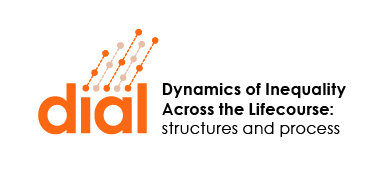This research uses a specially-designed survey in secondary schools in rural Bangladesh to look at the role of student effort in educational achievements and as a factor in overcoming disadvantage and inequality. The researchers looked at the test results of Bangladeshi schoolchildren in mathematics and English and evaluated the importance of effort relative to their … Read more
Measuring educational inequality of opportunity: pupil’s effort matters
Estimation of intergenerational mobility in small samples: evidence from German survey data
Using data from the German socio-economic panel, this paper provides new evidence on intergenerational mobility in Germany by focusing on intergenerational association in ranks—i.e. positions, which parents and children occupy in their respective income distributions. We find that the association of children’s ranks with ranks of their fathers is about 0.242 for individual labor earnings … Read more
Students’ behavioural responses to a fallback option – Evidence from introducing interim degrees in German schools
This paper examines the outcome of a policy-change in Germany which was designed to ensure students who dropped out at a late stage still had an interim qualification. It finds the reform reduced the number who downgraded to lower-level educational tracks and also increased the number successfully completing higher-level tracks. The research uses data collected … Read more
The baby year parental leave reform in the GDR and its impact on children’s long-term life satisfaction
This paper finds that children who spend 12 months at home with their mother after being born become adults who are more satisfied with life than those who spend just 5 months at home or in childcare. The study analyses the effects of reforms in the former German Democratic Republic where, in 1976, mothers with … Read more
Application of the EU-SILC 2011 data module “intergenerational transmission of disadvantage” to robust analysis of inequality of opportunity
This data article describes the original data, the sample selection process and the variables used in Andreoli and Fusco (Andreoli and Fusco, 2019) to estimate gap curves for a sample of European countries. Raw data are from 2011 roaster of EU-SILC, cross-sectional sample of module “intergenerational transmission of disadvantage”. This article reports descriptive statistics of … Read more
Robust Cross-country Analysis of Inequality of Opportunity
International rankings of countries based on inequality of opportunity indices may not be robust vis-à-vis the specific metric adopted to measure opportunities. Indices often aggregate relevant information and neglect to control for normatively irrelevant distributional factors. This paper shows that gap curves can be estimated from crosssectional data and adopted to test hypotheses about robust … Read more
Measuring Unfair Inequality: Reconciling Equality of Opportunity and Freedom from Poverty
This working paper takes up the issue of multifaceted inequality by putting forth a new measure of unfair inequality. The authors argue that inequality is not bad per se, but that one should differentiate between different aspects of inequality in order to make normative statements about the fairness of a given income distribution.
